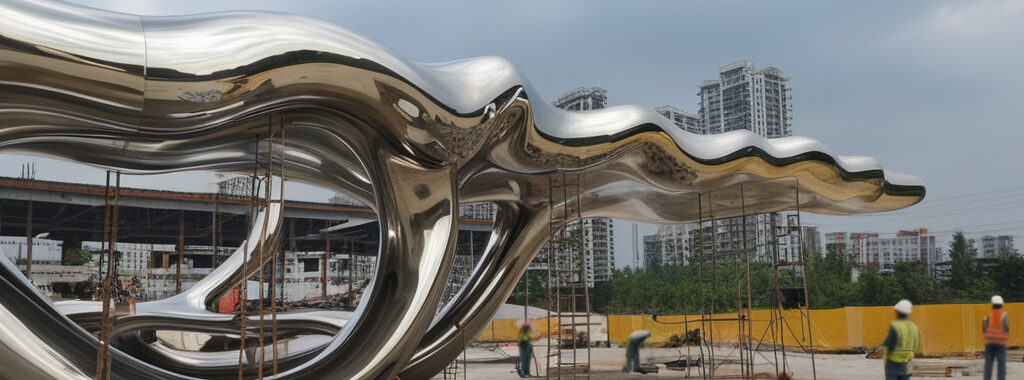Sculptures are a form of art, and metal sculptures are no exception. The biggest quality of any sort of art, be it drawing, written content, or skilled work, is that it always evolves over time. Metal sculptures, just like any other art, have undergone several design trends according to the flow of style over decades.
From Ancient Masterpieces To Modern Metal Sculpture – Trends That Defined The Industry
The practice of metal sculpture art can be dated back to as early as the 4th millennium BCE in regions like Mesopotamia and Egypt. But the industry has evolved so much over time that discussing it could take a whole day. For such reasons, we will start with modern metal sculpture art.
The Modern Metal Sculpture Art Explained
Unlike its ancient history, modern metal sculpture can be traced back to the start of the 20th century specifically from the 1910s. Each trend can be broken down into a decade or two, and each period is marked by specific themes. These themes are listed and discussed as follows:
1910-1920: Construction
- 1920-1930: Geometric
- 1930-1940: Surreal
- 1940-1950: Abstract
- 1950-1960: Organic
- 1960-1970: Minimal
- 1970-1980: Postmodern
- 1980-1990: Diverse
- 1990-2000: Hybrid
- 21st century – Onwards: Contemporary
1910-1920: Construction
This was the era when artists really started to break away from traditional methods. Sculptors began using industrial materials and techniques, constructing their pieces by welding, bolting, and assembling different metal parts. It was all about the process of putting things together to create form.
1920-1930: Geometric
Following the initial shift towards construction, the art of this era was characterized by sleek lines and sharp angles. Metal sculptures of this time often featured clean, geometric shapes and patterns, reflecting the precision of the machine age and Art Deco movement; a Parisian art movement before World War II.
1930-1940: Surreal
This was the time when the infamous World War II started, and due to the utter chaos everywhere, art turned into dreamlike and irrational. Metal sculptures of the Surrealist movement often featured unexpected combinations of objects and forms, exploring the subconscious mind and creating a sense of wonder or unease.
1940-1950: Abstract
This was the time of aftermath of the war and time to heal. As a result of this period of reflection, after the war, artists often looked inward, focusing on pure form and emotion rather than recognizable objects. This reflected metal sculpture art.
Abstract metal sculpture of this period was all about exploring shapes, lines, and textures for their own sake, often with a sense of raw energy and feeling expressed through the metal itself.
1950-1960: Organic
Abstractism always leads to the search for organic beauty, and the metal sculptors of that time followed exactly this path. In contrast to the earlier focus on geometric and purely abstract forms, moving away from strict abstraction, some sculptors started to explore more natural and flowing forms in metal. This era brought a softer, more life-like feel to metal sculpture, even in abstract works.
1960-1970: Minimal
Building upon the exploration of fundamental forms, in contrast to the expressive styles before, the Minimalist movement in metal sculpture focused on simplicity and essential forms. The art contained clean lines, basic shapes, and often the use of industrial materials in their raw state. It was about reducing the sculpture to its most fundamental elements.
1970-1980: Postmodern
This decade saw artists questioning the rules of modernism. Postmodern metal sculpture embraced a wider range of styles, often incorporating historical references, pop culture elements, and a sense of irony or playfulness.
1980-1990: Diverse
Moving forward from the postmodern era, the art world became even more open and inclusive, leading to a great variety of styles in metal sculpture. Artists explored personal narratives, social issues, and a mix of traditional and contemporary techniques. There wasn’t one dominant style but rather a vibrant mix of individual expressions in metal.
1990-2000: Hybrid
This era was marked by digitalization. With the rise of digital technology and increased globalization, the art world became even more open and inclusive, leading to a great variety of styles in metal sculpture. Artists explored personal narratives, social issues, and a mix of traditional and contemporary techniques. There wasn’t one dominant style but rather a vibrant mix of individual expressions in metal.
21st century – Onwards: Contemporary
Finally, today, modern metal sculpture is incredibly diverse. Artists continue to push boundaries, exploring a vast array of themes, materials, and technologies. From large-scale public art to intricate gallery pieces, contemporary metal sculpture reflects the complex and ever-evolving world we live in, with artists using metal to express everything imaginable.
Metal Sculpture Studios – A State-of-Art Modern Metal Sculpture Manufacturer
Do you want to get modern metal sculpture that suits your style? Metal Sculpture Studios is one of those metal fabrication companies that are experts in making all types of metal sculptures. Avail of our services by calling + 513-497-2200.


Leave A Comment